|
Click pictures for a larger version.
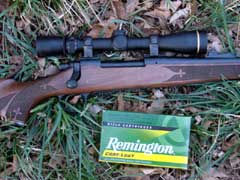
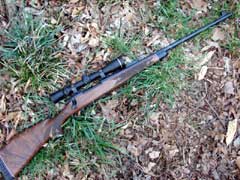
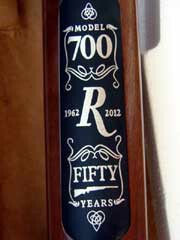
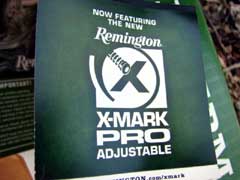
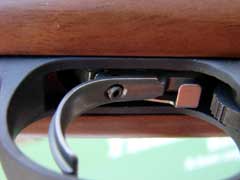
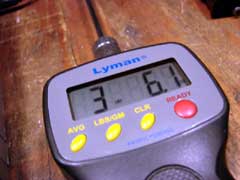

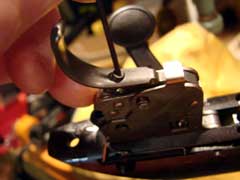
Trigger is slightly adjustable for pull weight.
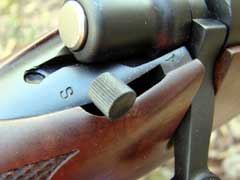
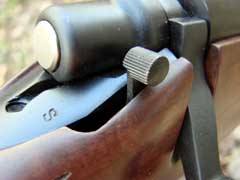
Two-position safety.
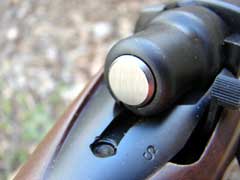
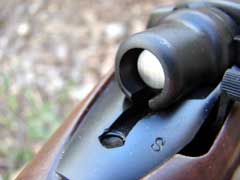
Cocking indicator.
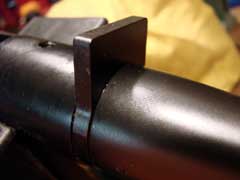
Recoil lug.
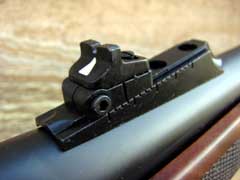
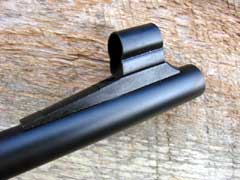
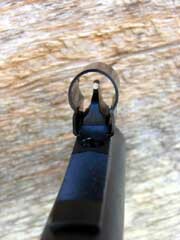
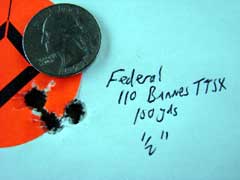
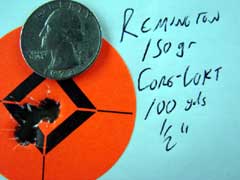

Superb accuracy!

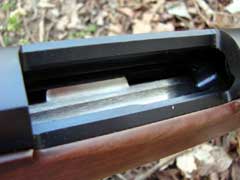
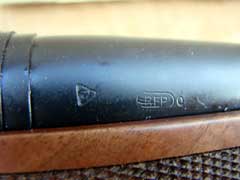
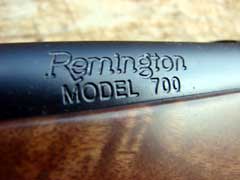
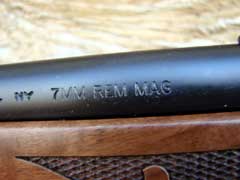

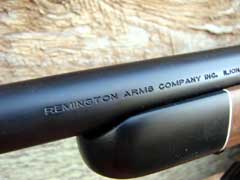
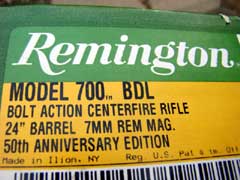
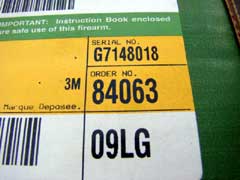
|
|
2012 marks fifty years of production of the
Remington Model 700 bolt-action rifle. The Model 700 is one of
the most commercially successful rifles every built, with well
over five million produced. The Model 700 is one of the
most-trusted rifles in the world, and is widely used by hunters,
target shooters, law enforcement, and is the basis for our
nationís military thirty caliber bolt-action sniper rifles.
The Model 700 has been chambered for most every modern sporting
rifle cartridge in existence at one time or another, with many
variations of the 700 offered over its fifty-year run.
This Anniversary Model 700 BDL shown here is
available for a limited time, and chambered only for the 7mm
Remington Magnum cartridge, which was also introduced in 1962,
with 2012 marking the cartridge's fifty-year successful run as
well. The BDL wears a very well-figured and fitted walnut stock,
and has nostalgic white line spacers at the grip cap and forend
cap. The stock is finished with a satin sheen. The checkering is
a cut Fleur-de-Lis pattern. The butt is capped with a ventilated
recoil pad, and as should any hunting rifle, the 700 BDL wears
sling swivel studs.
The barrel and action wear a semi-matte
finish, with the finish matching that of the aluminum floor
plate and trigger guard very well. The hinged magazine floor
plate drops to empty the three-shot magazine, and the floor
plate is engraved to commemorate the rifleís 50th anniversary.
The barrel is twenty-four inches in length, and has a sturdy set
of open sights mounted. The receiver is drilled for scope bases,
and I attached a Leupold VX-III
3.5 to 10 power scope with the Boone & Crockett ranging
reticle using Burris bases and rings. This Leupold scope is
ideal for such a hunting rifle as this 7mm Magnum 700 BDL. The
7mm Mag is a really fine hunting cartridge, and easily pushes
bullets to magnum velocities without pushing the limits of the
cartridge case or the rifle. The case has plenty of powder
capacity, with no need to use compressed charges to achieve high
velocity.
The Remington Anniversary BDL is a full-sized
rifle, and balances and handles as a proper hunting rifle
should. The 700 BDL shoulders well, and the Monte Carlo cheek
piece places the eye right behind the scope, as it should. My
sample rifle weighed in at eight pounds, two ounces. The trigger
pull released crisply at three pounds, six ounces. The 700
X-Mark Pro trigger is user-adjustable within a short range for
pull weight.
I tried two very good 7mm Magnum factory
loads in this 700 BDL, along with a couple of 7mm bullets that I
have been anxious to try. The Federal load tested uses the
excellent Barnes Tipped Triple-Shock homogenous copper
hollowpoint that weighs only 110 grains, and should be a superb
whitetail load, exiting the Remingtonís barrel at varmint
rifle velocities, yet the Barnes bullet doesnít behave like a
varmint bullet, holding together very well upon impact. The
other factory load that I tried was a bit of a nod to nostalgia;
the dependable and time-tested Remington Core-Lokt pointed soft
point in the familiar green and yellow box. This bullet design
has been used for decades by hunters, and is still as good as it
ever was. Both of these factory loads exhibited superb accuracy
from this 700 BDL; much better than I expected, and it is a
testimony to the quality of both the rifle and the ammunition. I
usually mount a high-powered target scope for accuracy testing,
but left the Leupold VX-III atop the BDL for all shooting, and
it delivered. I had no chance to try the Remington at long
range, but tested for accuracy at a distance of 100 yards, after
getting the rifle sighted on paper at fifty. Both factory loads
amazingly fired half-inch three-shot groups at 100 yards,
consistently. From the beginning, the rifle performed very well,
and the accuracy did not change, from the first group fired to
the last. It is unusual for a rifle to shoot every group the
same size, but there was not even one-eighth inch difference
between the smallest and largest groups fired, with the best
measuring just under one-half inch, and the largest groups
opening up to almost nine-sixteenths, with the average remaining
at one-half inch. I was impressed.
For handloading, I have had sitting here for
a couple of months some Cutting Edge Raptor 7mm bullets. These
bullets are of homogenous construction, having no lead core. The
shank of the bullet is sized to ride the bore, with four driving
bands to engage the rifling. In profile, the bullets are
symmetrical, but one end is solid, and the other has a large
hollow cavity. The Raptor can be loaded as a solid or as a
hollowpoint, and in the hollow end, a synthetic tip can be
snapped in to improve the ballistic coefficient for long range
shooting. I loaded the Raptor all three ways, and it shot very
well in each way loaded. The bullet can be loaded as a solid,
which has a large, flat meplat, for deepest penetration and no
expansion. For game hunting, I prefer to load it as a
hollowpoint. Around here, three hundred yards is a long shot, so
the ballistic tip makes little difference in trajectory.
Hopefully, I can later test this bullet at long range, comparing
the flight characteristics with and without the ballistic tip
installed. I also tried out the low-drag 160 grain copper
hollowpoint boat-tail bullet from Cutting Edge, but have not yet
found a satisfactory load for that bullet in this rifle. I am
satisfied with the velocity, but the stability of that bullet in
this rifle so far is not up to my expectations. The BDL has a
one-in-nine-and-one-quarter inch rifling twist, but so far, it
does not seem to be fully stabilizing this long bullet. I might
need to push it a bit faster than the 2900 feet-per-second
nominal velocity to stabilize that bullet. However, the Cutting
Edge Raptor is performing very well, and I hope to get to try
that one on game later this year.
Chronograph results are listed in the chart
below, with velocity readings taken at a distance of twelve feet
from the muzzle. Velocities are listed in feet-per-second (fps).
Bullet weights are listed in grains. Powder charge weights are
also listed in grains. Velocity readings were taken on a calm,
clear day with an air temperature in the fifty-five degree
Fahrenheit range and a relative humidity of thirty percent, at
an elevation of approximately 541 feet above sea level. Accuracy
testing was done over a period of two days, with temperatures
remaining relatively steady, with a slight breeze.
Factory Loads
| Ammunition |
Bullet Weight |
Velocity |
| Remington Core-Lokt |
150 |
2991 |
| Federal Barnes TTSX |
110 |
3502 |
Handloads*
| Bullet |
Bullet Weight |
Powder & Charge |
Velocity |
| Cutting Edge Raptor |
130 |
Hybrid
100V, 62 grains |
3160 |
| Cutting Edge LD-HPBT |
160 |
Hybrid
100V, 60 grains |
2910 |
I was very well satisfied with the velocities
of both the factory ammunition and the handloads. Impressed with
the fine accuracy of the Cutting Edge Raptor with the load
listed, I did not try to push for more velocity, as reaching
almost 3200 FPS with the 130 grain bullet will do the job.
Recoil with all loads tested was easy to tolerate. There was no
pain at all to the shoulder, even after long sessions at the
bench. Muzzle blast is fierce, as it is with any modern
bottle-necked magnum cartridge.
The Remington Model 700 celebrates its
well-deserved milestone of fifty years and millions of rifles
sold and still in service. Not many centerfire sporting rifles
can make that claim, but the Remington 700 remains at the top of
the heap, and is modern enough to easily go another fifty, and
then some.
Check out the Model 700 and other Remington
products online at www.remington.com.
To order a Model 700 rifle online, go to www.galleryofguns.com.
To order quality 7mm Magnum ammunition, go to
www.luckygunner.com.
To order the Cutting Edge bullets, go to www.cuttingedgebullets.com.
Jeff Quinn
*NOTE: All load data posted on this
web site are for educational purposes only. Neither the author nor
GunBlast.com assume any responsibility for the use or misuse of this data.
The data indicated were arrived at using specialized equipment under
conditions not necessarily comparable to those encountered by the
potential user of this data. Always use data from respected loading
manuals and begin working up loads at least 10% below the loads indicated
in the source manual.
  
Got something to say about this article?
Want to agree (or disagree) with it? Click the following link to
go to the GUNBlast Feedback Page.
|
|
Click pictures for a larger version.
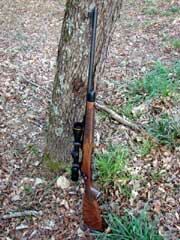
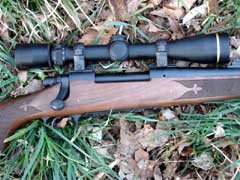
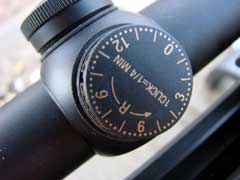
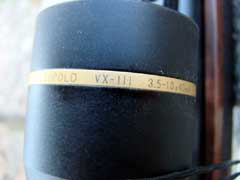

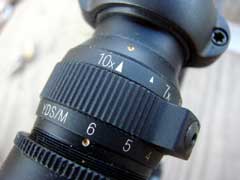
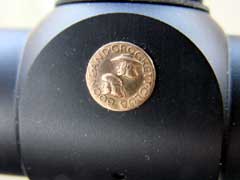
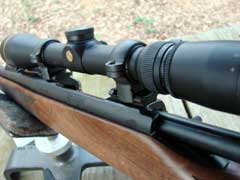
Leupold 3.5 to 10 Boone & Crockett VX-III.

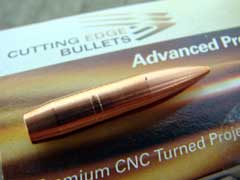
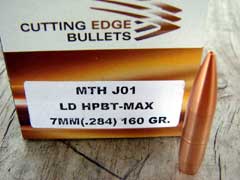
Cutting Edge 160-grain Low-Drag hollow point boattail copper bullet.

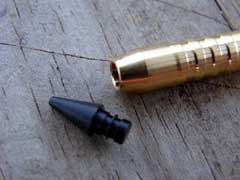
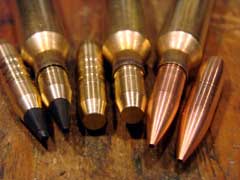
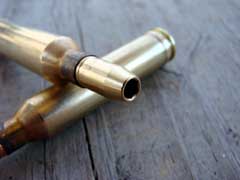
Cutting Edge 130- grain Raptor solid / hollowpoint / tipped bullet.
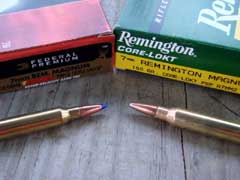
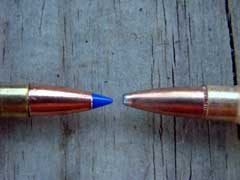
Factory ammo.
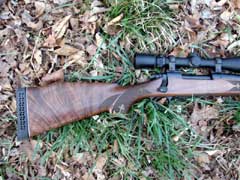


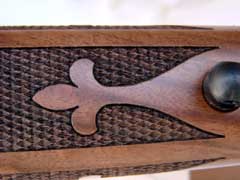

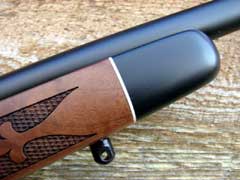
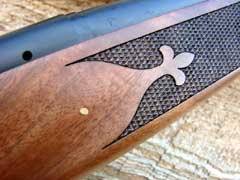

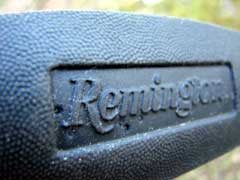

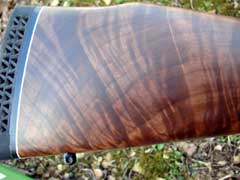
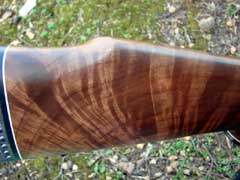
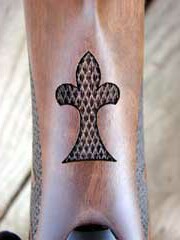
|
![]()